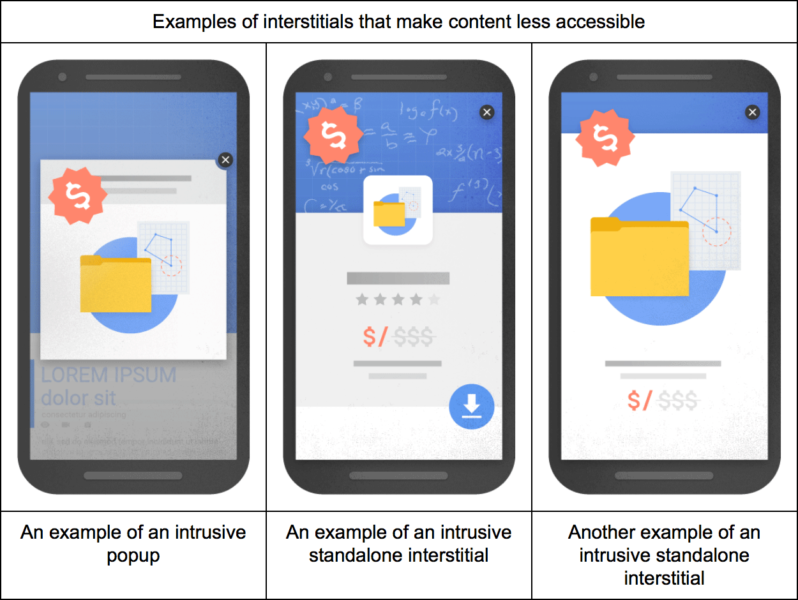
Image via Search Engine Land
It is obvious that mobile is skyrocketing. Fifty percent of searches are now done on mobile, and higher depending on industry. Because of this substantial and ever-growing increase, it is important to provide the best mobile user experience possible. Google has been guiding everyone in this direction for a few years, first by penalizing websites that were not mobile friendly. Now they are refining their algorithm to penalize sites that do not provide a good user experience, specifically with intrusive ads.
The web giant recently announced that starting January 10, 2017, they would be cracking down on “intrusive interstitials” because it prevents content from being easily accessible to a user from the mobile search results. The specific problematic placements include:
- Popups that cover the main content.
- Displaying standalone ads that the user has to dismiss before accessing the main content.
- Using a layout where the above-the-fold portion of the page appears to be a stand-alone ad, pushing the main content below the fold.
There are a few interstitials that would not be affected by this change if they are used responsibly. These include:
- A popup that appears to be in response to a legal obligation, such as age verification.
- Login dialogs on sites where content is not publicly indexable.
- Banners that use a reasonable amount of screen space and are easily dismissible.
Websites that use any of the intrusive interstitials after January 10, 2017, are risking a drop in rankings on Google’s search engine results pages. As it begins to roll out next year, we as users can anticipate a much easier mobile user experience, and for that we are grateful.
